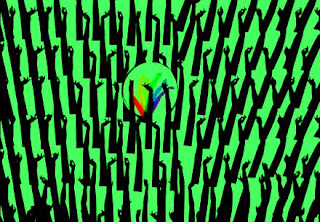Aravind's operations include a chain of five eye hospitals, a manufacturing facility for producing intraocular lenses and other consumables needed for cataract and other eye surgeries, a training center for imparting training to other eye hospitals in India and other countries, and a network of outreach centers. Aravind hospitals conducted 269,577 eye surgeries in 2008-09, of which nearly 50% were performed for free for poor patients. The charges for the remaining 50% were at or below market rates i.e. there were no cross subsidies.
Of the facilities' 2.46 million outpatients during that time, 50% were treated for free, and the fee for most of the others was a nominal $0.50. Aravind takes no donations or charity and yet not only makes a profit but enough to fund a new hospital every three years! All these new hospitals and expansions have been internally funded. Aravind has been doing this for more than two decades. The $64,000 question is: How? The answer lies in the elements that make up Aravind:
1. Extraordinary productivity. Aravind doctors average about 25 cataract surgeries per day (actually, over six hours), whereas other eye-care hospitals do six to eight surgeries per doctor. Aravind achieves this by having a highly streamlined, innovative, and efficient system and a highly trained paramedical staff.
2. Exploiting economies of scale. This allows its in-house manufacturing facility, Aurolab, to produce intraocular lenses (IOLs) at $5; global prices are about $80. Aravind is the lowest-cost producer of IOLs in the world. Its scale of production enables, or rather, compels it to export almost 50% of its production to other eye-care hospitals, both in India and abroad.
3. Borrowing best practices from other sectors. Aravind has borrowed concepts like economies of scale and assembly lines from the industrial sector and applied them in health care to bring down costs without sacrificing quality. Volume is critical to this mode of operation. Aravind generates volume through its outreach programs and eye camps, which are even conducted in interior villages.
4. Investing in critical activities but saving on frills. Aravind lowers its cost position by reducing bells and whistles without compromising on the quality of its equipment or medicines or the competence of doctors and nurses.
5. Aravind's ideological foundations. Its founder, the late Dr. Govindappa Venkataswamy ("Dr. V"), stated his mission simply as "eradication of needless blindness" when he founded the hospital in 1976. This mission has continued to this day. All staffers — from doctors and nurses right down to attendants and sweepers — are imbued with this mission. Every patient, however poor he or she may be, must be treated with respect. Commitment is vital. Every action Aravind undertakes is tested against the criterion of whether it will help achieve this mission.
There is nothing in this model that cannot be replicated in any country — developing or developed. The keys are simple: pay close attention to operational efficiency, work on separating the core from the frills, maximize the productivity of the costliest resources (doctors and equipment), and utilize the sheer power of volume.
Aravind is a perfect example of how astonishing the results can be when produced through a congruence of vision, values, purposeful implementation and a high degree of efficiency. Its mission and vision statements are not pieces of paper on display; they come alive in each of the organization's activities.



